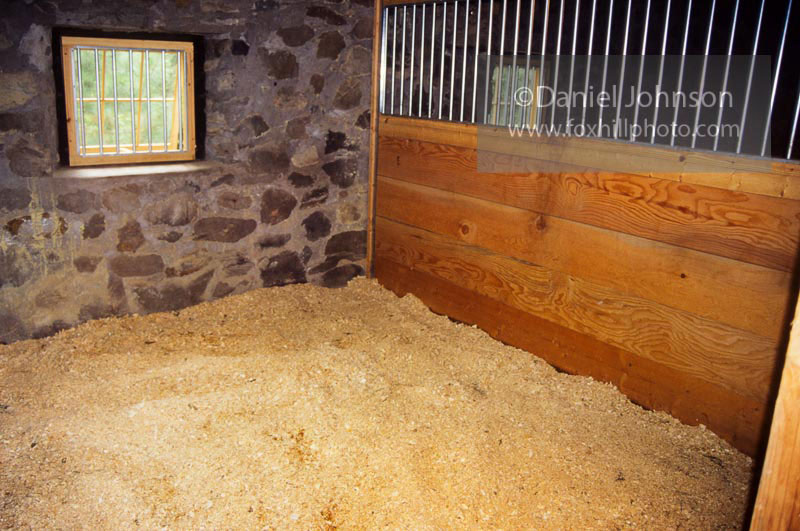Stall-Cleaning Tools
To begin with, you’ll need a stall pick. Since stall cleaning is a job that happens every day (possibly more), it’s important to find a pick that is comfortable to you, isn’t too heavy, and gets the job done. You might find you prefer a large pick with sides that can scoop up a large amount of material at once, or you may prefer a lighter, more agile pick that can perform with precision. One problem I’ve found with large picks is that you can accidentally remove too much good bedding. I prefer one known as the “DuraFork”—or others like it, as it’s a size that is easy to handle.
Another tool you might want to keep handy is a scoop shovel, for those times when you want to completely empty and re-bed a stall from scratch. Scoop shovels can also help clean large areas of wet bedding.
You’ll also need something to clean into. You can go the route of a simple muck bucket (maybe with a cart to go with it), but these will generally only be large enough to handle one or two stalls at a time. A wheelbarrow offers more room and maneuverability (two-wheeled versions are pretty handy), and can be great for cleaning multiple stalls. Still other stablehands will opt to clean into the bed of a UTV or small trailer if those amenities are available.
And if you don’t have anyone to talk to, be sure to keep a barn radio handy!

Process of Stall Cleaning
Usually, I like to start by removing all the manure first, to get a clean workspace for bedding management. De-pending on the habits of your horse and how “organized” he is, this process can take anywhere from less than a minute to several minutes. The key objective is to avoid removing good bedding along with the manure. You may have to over-turn some bedding in your search.
Next, begin tackling the bedding. Excessively wet areas should be removed entirely, while areas that are just a little wet can often be dried by “flipping” and “fluffing” them to let air in (this is important, because it can be a real time and money saver). Many stalls retain good, dry bedding in the corners, so go ahead and rake this out and mix it into areas you’d like to dry.
Finally, take a good look at the stall’s overall appearance. Is the bedding too thin overall? If so, mix in additional fresh bedding until the floor of the stall is soft and inviting.
Choose Your Stall Bedding
Bedding choices vary somewhat depending on location and budget. While you might find people using straw bedding for special instances such as foaling stalls, you’ll find that wood shavings or pellets (not sawdust!) are a very common bedding for regular stalls. And with good reason—wood shavings are absorbent, easy to clean, and smell great (straw also smells great, but isn’t as easy to clean!) Try to find a brand of shavings that isn’t too dusty, and be sure to keep your horse’s bed sufficiently thick to provide correct comfort.
What are your favorite stall cleaning tips?
Daniel Johnson is a freelance writer and professional photographer who has spent many wonderful minutes cleaning stalls while listening to a very old barn radio. He’s the author of several books, including How to Raise Horses: Everything You Need to Know, (Voyageur Press, 2014). Dan’s barn is home to Summer, a Welsh/TB cross, Orion, a Welsh Cob, and Mati and Amos, two Welsh Mountain Ponies. Follow him at www.facebook.com/foxhillphoto.







cool
I sure love those rock walls in that barn. Neat stall too, no cob webs….(where is Charlotte). Thanks for the tips.
Smooth, flat rubber mats in the stalls make the job much easier.
What’s wrong with sawdust? Most of my horsekeeping friends use it and my farrier recommends it. Easier to sift out than shavings and more economical. You just have to make sure it’s not from black walnut, which is rare around here anyway. Most of it is pine or cedar.